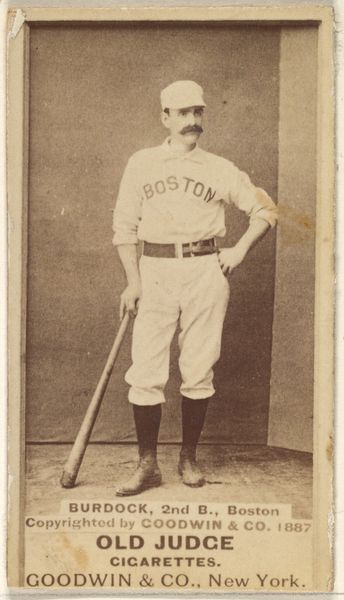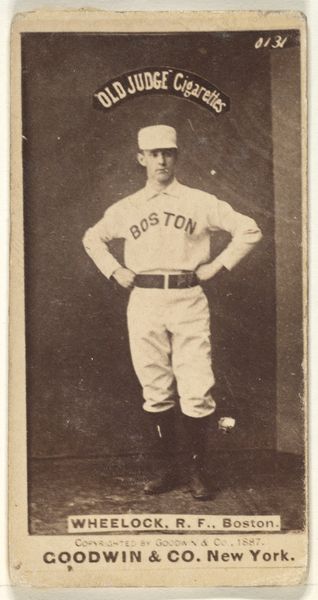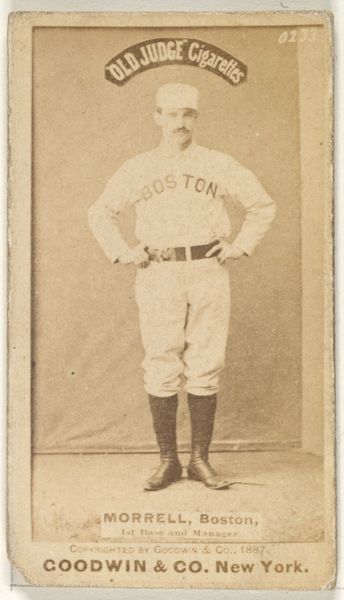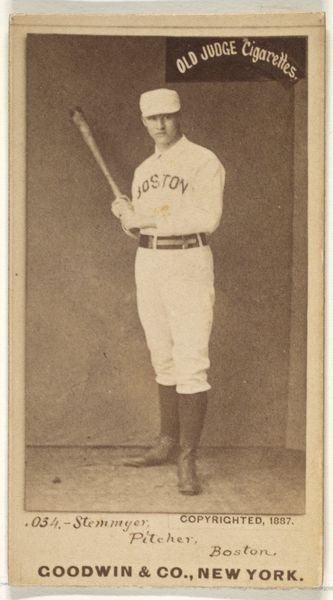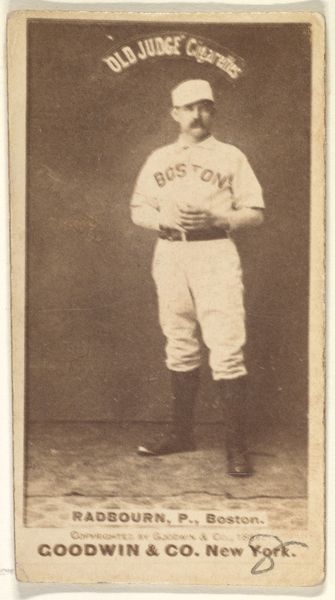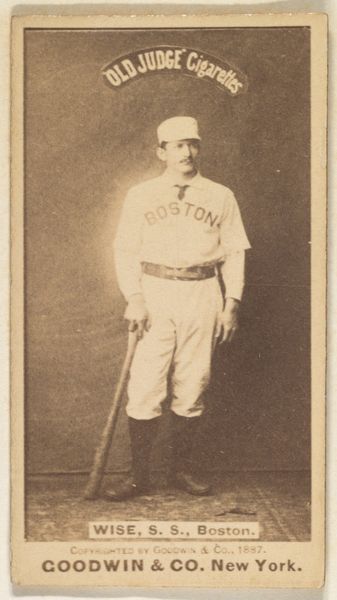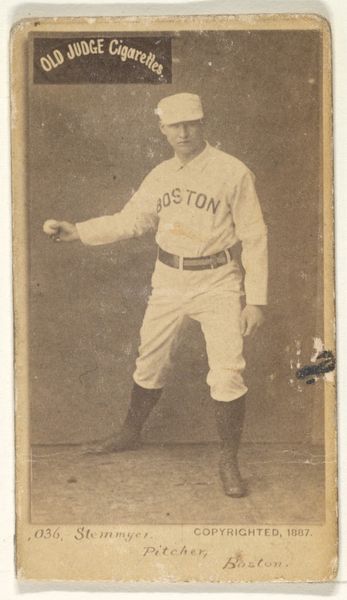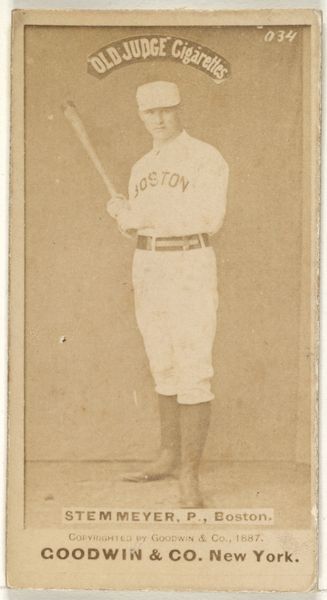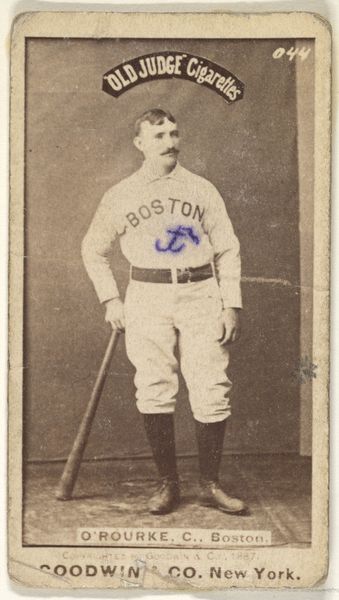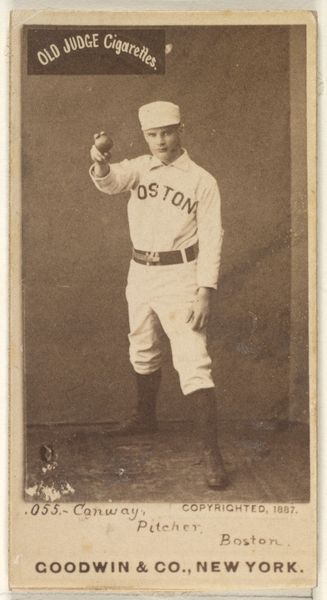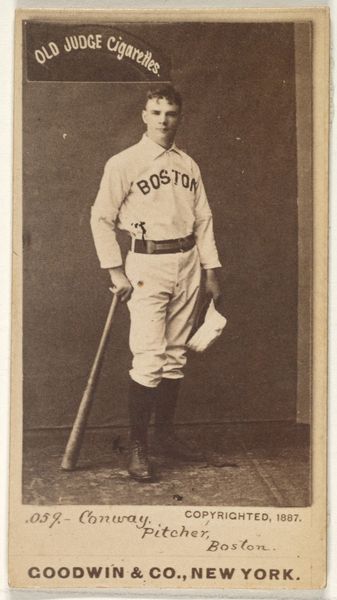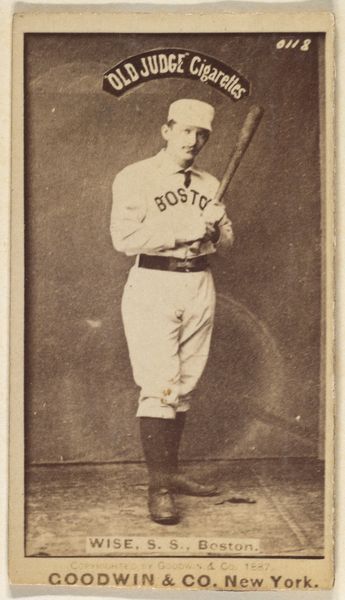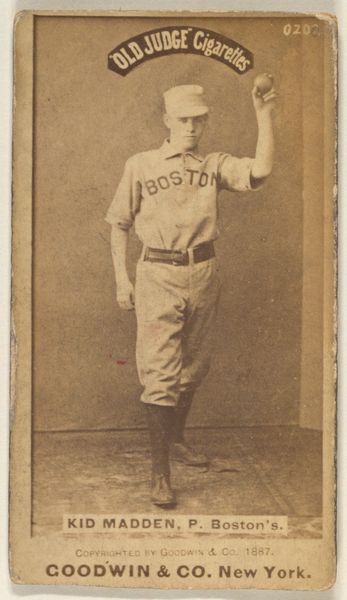
Sutton, 2nd Base, Boston, from the Old Judge series (N172) for Old Judge Cigarettes 1887
0:00
0:00
drawing, print, photography, albumen-print
#
portrait
#
drawing
# print
#
baseball
#
photography
#
men
#
albumen-print
Dimensions: sheet: 2 11/16 x 1 3/8 in. (6.9 x 3.5 cm)
Copyright: Public Domain
Curator: Here we have a rather intriguing artifact from 1887, "Sutton, 2nd Base, Boston," part of the Old Judge Cigarettes series (N172) created by Goodwin & Company. Editor: It strikes me as quite formal, almost rigidly posed. The stark sepia tones create a somber atmosphere. It feels less like a celebration of athleticism and more like a study. Curator: The photograph is actually an albumen print, and would have been a trading card. Think of the formalist approach: the vertical composition is starkly divided by Sutton’s figure, creating distinct areas of light and shadow. Note the subtle gradations within the backdrop. Editor: Absolutely. And these cards are really marketing tools deeply embedded in the societal trends of their time. Baseball's rising popularity intersected with the mass production and consumption of tobacco, crafting celebrity around sports figures. How are concepts of masculinity constructed here through a very sanitized image of athletic prowess? Curator: Semiotically, his uniform signifies not only the team identity—Boston, emblazoned across his chest—but also represents broader ideals of American identity in the late 19th century. Editor: While that might be true on the surface, there’s also a glaring silence around issues of race and class. Consider that at this time, the very idea of who was allowed to participate in “American” ideals of athleticism was drastically limited. Whose stories remain untold or erased through such carefully curated representations? This carefully crafted public persona serves to distract from wider injustices in US culture. Curator: The beauty is in the precision of the photographic process; the way the light defines Sutton’s features and the subtle textures of his uniform, creating an almost tangible presence. Editor: And it also creates a carefully manufactured public image. The rigid pose, and manufactured context speak volumes. It serves not only to capture, but to control a certain narrative that reflects on an idealized vision of sportsmanship, excluding wider sociopolitical conversations from the narrative. Curator: An engaging dialectic between the intended idealization and the untold histories woven into this photographic object. Editor: Indeed, uncovering that dialogue brings nuance and a fuller understanding of its place in time.
Comments
No comments
Be the first to comment and join the conversation on the ultimate creative platform.
